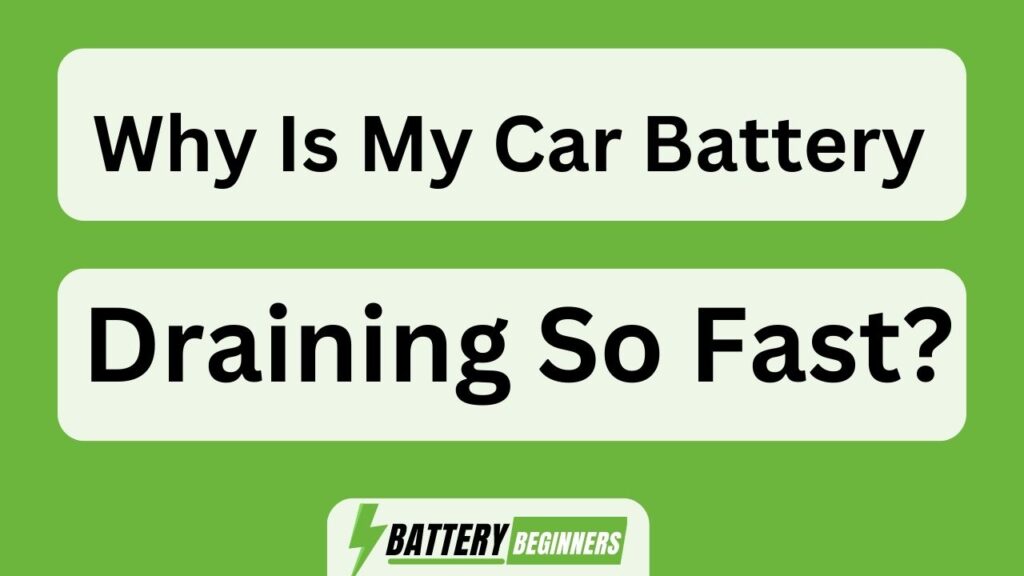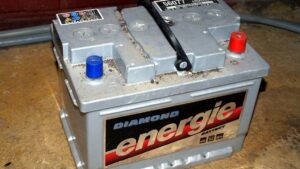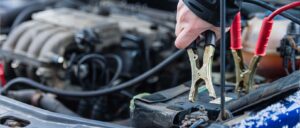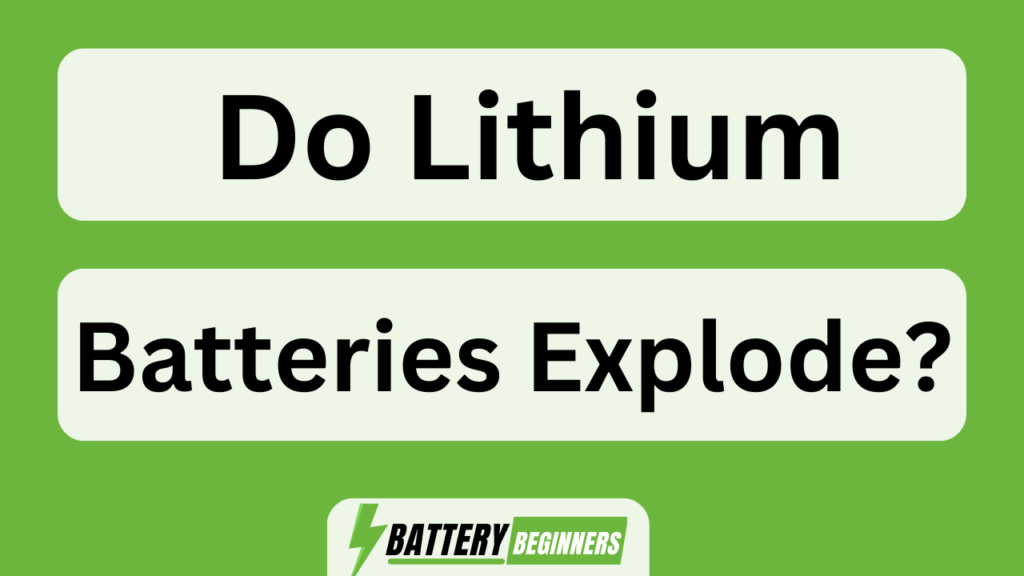Are you experiencing the frustrating phenomenon of your car battery mysteriously draining faster than usual?
Well, fear not! In this article, we delve into the various reasons why your car battery might be behaving in such a way.
From factors like battery age and condition to electrical system issues and extreme temperatures, we leave no stone unturned.
So sit back and let us guide you through the technical intricacies of this perplexing problem.
Key Takeaways OF Why Is My Car Battery Draining So Fast?
- Excessive battery drain can be caused by accessories that are still drawing current when the car is turned off.
- A malfunctioning charging system, including loose or corroded battery connections and a faulty alternator or voltage regulator, can contribute to battery drain.
- Battery sulfation, which occurs when sulfate crystals form on the battery plates, can result in reduced battery capacity and difficulty starting the vehicle.
- To remove sulfation from the battery, a paste made of baking soda and water can be applied to the terminals and scrubbed with a wire brush before rinsing and reconnecting.
Battery Age and Condition
You should check the age and condition of your battery. As batteries get older, they tend to lose their ability to hold a charge for long periods of time. This could be one reason why your car battery is draining so fast.
Another possibility is that the battery itself may be faulty or damaged, which can also cause it to drain quickly. To determine if this is the case, you can have your battery tested by a professional. They will be able to tell you if it needs replacement or if there are any issues with its condition.
Once you have ruled out any battery-related problems, it’s important to move on to investigating potential electrical system issues that may be causing the rapid drain.
Electrical System Issues
One possible cause for the rapid depletion of your car’s battery could be issues with the electrical system. When there are problems within the electrical system, it can lead to excessive battery drain. To help you understand this better, let’s take a look at some common battery drain causes and how to troubleshoot them:
| Battery Drain Causes | Troubleshooting |
|---|---|
| Faulty alternator | Check voltage output |
| Parasitic draws | Conduct a parasitic draw test |
| Malfunctioning components | Inspect wiring and connections |
By examining these potential issues, you can pinpoint the source of battery drain and address it accordingly. Understanding the intricacies of your vehicle’s electrical system is crucial in maintaining optimal battery performance.
Moving forward, extreme temperatures can also play a significant role in draining your car’s battery.
Extreme Temperatures
Extreme temperatures can have a significant impact on the performance of our car’s electrical system.
In cold weather, the battery’s capacity decreases, making it harder to start the engine.
Additionally, extreme heat can cause excessive evaporation of battery fluid and lead to accelerated corrosion and shorter battery life.
Cold Weather Effects
Cold weather can cause your car battery to drain faster. This is due to several factors that are specific to winter conditions.
- Lower temperatures reduce the chemical reactions within the battery, making it harder for it to produce and store energy efficiently.
- Cold weather also thickens the engine oil, which places an additional strain on the battery when starting the car.
- Increased use of electrical components like heaters, defrosters, and headlights during cold weather puts a greater demand on the battery.
These effects of cold weather on car batteries can significantly decrease their overall capacity and lifespan. However, there are steps you can take to minimize these issues.
Now let’s explore how hot weather affects your car battery…
Hot Weather Effects
Hot weather can also have detrimental effects on your car battery. The battery lifespan is greatly impacted by high temperatures. When the temperature rises, the chemical reactions within the battery increase, causing it to discharge more rapidly. This means that your battery will drain faster in hot weather compared to normal conditions.
Additionally, excessive heat can cause the water inside the battery to evaporate, leading to reduced electrolyte levels and potential damage to the internal components. It is important to note that extreme heat can accelerate the natural aging process of a battery, reducing its overall lifespan.
To prevent this from happening, it is crucial to properly maintain and take care of your car’s battery. Improper usage and maintenance can further exacerbate these issues and lead to even quicker draining of the battery.
Improper Usage and Maintenance
Leaving lights or electronics on for an extended period of time without the engine running puts a significant strain on the battery and depletes its charge. Failing to maintain proper battery levels by not checking the electrolyte levels or keeping the terminals clean and tight can lead to decreased performance and faster draining of the battery. Neglecting regular maintenance tasks such as cleaning corrosion off the terminals or replacing an old battery can also contribute to a fast-draining car battery.
Leaving Lights or Electronics On
If you forget to turn off your lights or electronics, your car battery will drain quickly. This is one of the common battery drain causes that can easily be prevented with some simple tips. First, always double-check that all lights are turned off before leaving your car. Even a small interior light left on overnight can significantly drain the battery. Additionally, avoid using unnecessary electronics when the engine is not running, as they draw power from the battery. To help you remember to turn everything off, create a checklist and make it a habit to go through it every time you exit your vehicle. By following these battery drain prevention tips, you can ensure that your car’s battery remains charged and ready for use. Now let’s move on to the next section about failing to maintain proper battery levels without skipping a beat.
Failing to Maintain Proper Battery Levels
Make sure you regularly check and maintain your battery levels to avoid any issues with starting your vehicle. Battery charging techniques are crucial in maintaining proper battery levels.
One effective technique is using a smart charger that automatically adjusts the charging voltage to prevent overcharging or undercharging.
Another technique is trickle charging, which provides a low, constant charge to keep the battery at optimal levels.
Signs of low battery levels include slow cranking when starting the engine, dimming headlights, and frequent jump-starts. Ignoring these signs can lead to a completely drained battery and potential damage to the electrical system.
Neglecting regular maintenance can exacerbate these issues, so it’s important to address any problems promptly.
Neglecting Regular Maintenance
To avoid potential problems, it’s important to regularly maintain your vehicle and not neglect its upkeep. Proper maintenance is crucial for ensuring a longer car battery lifespan and avoiding the signs of a dying battery.
One of the key aspects of maintaining your battery is checking its fluid levels regularly. Low fluid levels can lead to poor performance and reduce the overall lifespan of the battery. Additionally, keeping the battery terminals clean and free from corrosion will ensure optimal electrical connections. Regularly inspecting the battery for any signs of damage or wear is also essential in preventing unexpected failures.
By taking these simple steps, you can prolong the life of your car battery and minimize the chances of encountering a faulty alternator that may further drain your battery power.
Faulty Alternator
Check if your car’s alternator is functioning correctly, as a faulty alternator can cause your battery to drain quickly. Alternator issues are one of the common culprits behind battery drain problems.
Signs of a faulty alternator include dimming headlights, fluctuating electrical power, and difficulty starting the engine. The alternator is responsible for charging the battery while the car is running, so if it fails to do so properly, the battery will not receive enough charge and will eventually drain.
If you suspect an issue with your alternator, it is important to have it checked by a professional mechanic who can diagnose and repair any problems. Addressing this issue promptly can prevent further damage to your vehicle’s electrical system.
Moving on to the next section about battery drain from accessories…
Battery Drain from Accessories
After addressing the issue of a faulty alternator, let’s move on to another potential reason for your car battery draining quickly: battery drain from accessories. This is a common cause that can significantly impact the performance of your vehicle’s electrical system.
To troubleshoot this problem, it is essential to identify which accessories are drawing excessive power from the battery. Here are some steps you can take:
- Start by checking if any lights or electronics have been left on.
- Inspect all interior and exterior lights for possible faults or malfunctions.
- Verify that all charging cables and adapters are properly disconnected when not in use.
- Test each accessory one by one, disconnecting them temporarily to see if it affects the battery drain.
- Consider using an ammeter to measure current draw when the car is turned off.
By following these troubleshooting steps, you will be able to pinpoint which accessory is causing the excessive battery drain.
Next, we will delve into another crucial aspect related to a malfunctioning charging system.
Malfunctioning Charging System
A malfunctioning charging system can have a significant impact on the performance of your vehicle’s electrical system. It is important to understand the causes of charging system malfunctions and recognize the signs indicating that your charging system may be failing.
| Causes of Charging System Malfunction | Signs of a Malfunctioning Charging System |
|---|---|
| Loose or corroded battery connections | Dimming headlights |
| Faulty alternator | Battery warning light illuminated |
| Defective voltage regulator | Difficulty starting the engine |
Loose or corroded battery connections, a faulty alternator, and a defective voltage regulator are common causes of charging system malfunctions. If you notice dimming headlights, an illuminated battery warning light, or difficulty starting the engine, these could be signs that your charging system is not functioning properly.
Moving forward into our discussion about ‘battery sulfation,’ it is essential to address another potential factor contributing to rapid car battery drain.
Battery Sulfation
Battery sulfation is a common issue that can cause significant damage to the battery and lead to a decrease in its performance. It occurs when sulfate crystals form on the battery plates, preventing proper charging and discharging of the battery.
The effects of sulfation include reduced battery capacity, shorter lifespan, and difficulty starting the vehicle.
To remove sulfation from the battery, various methods such as desulfating chargers or chemical additives can be used to dissolve and remove the sulfate crystals, improving battery function and extending its life.
Causes and Effects of Sulfation
To avoid sulfation, make sure you regularly charge your car battery. Sulfation is a common issue that can significantly affect battery performance. When sulfation occurs, lead sulfate crystals form on the battery plates, reducing their ability to hold a charge. This leads to decreased voltage output and overall battery capacity.
The effects of sulfation include slower engine cranking, dimming headlights, and difficulty starting the vehicle. To prevent sulfation buildup, it is important to maintain a fully charged battery by using a trickle charger or driving your car regularly for extended periods.
Additionally, keeping your battery clean and free from corrosion will also help prevent sulfation. By taking these preventative measures, you can ensure optimal battery performance and avoid the need for removing sulfation from the battery in the future.
Removing Sulfation from the Battery
If you notice sulfation buildup on your car battery plates, there are steps you can take to remove it and restore battery performance. Preventing sulfation buildup is crucial to maintaining a healthy battery life. Here are some methods you can try at home to remove sulfation:
| Method | Materials Needed | Steps |
|---|---|---|
| Baking Soda | Baking soda, water | 1. Mix baking soda with water to form a paste. 2. Apply the paste to the battery terminals and let it sit for a few minutes. 3. Scrub the terminals with a wire brush and rinse with water. 4. Dry the terminals thoroughly before reconnecting them to the battery. |
By following these steps, you can effectively remove sulfation from your car battery and improve its performance. Once you’ve addressed this issue, it’s important to also consider other potential culprits of fast draining such as parasitic drains that we will discuss in the next section without any interruption in flow or rhythm of our explanation.
Parasitic Drains
One possible cause of a car battery draining fast could be due to parasitic drains. These are small electrical loads that continue to draw power from the battery even when the vehicle is turned off. Troubleshooting parasitic drains can help identify and address the issue.
Here are five common culprits of parasitic drains:
- Interior lights or trunk lights that don’t turn off
- Faulty switches, such as a stuck relay or a malfunctioning ignition switch
- Aftermarket accessories, like stereos or alarms, that have been improperly installed
- Malfunctioning components in the electrical system, such as a short circuit or a faulty module
- A charging system problem that causes the alternator to continuously charge the battery
Understanding these potential causes can aid in preventing battery drain and maintaining optimal performance.
Now let’s move on to some tips for preventing battery drain without compromising convenience.
Tips for Preventing Battery Drain
Here are some tips to help prevent your vehicle’s battery from draining quickly while still maintaining convenience. It’s important to prioritize battery maintenance and follow proper charging techniques to ensure its longevity.
| Tip | Description | Benefits |
|---|---|---|
| Limit use of electrical accessories | Minimize the usage of power-consuming devices such as headlights, radios, or entertainment systems when the engine is off. | Reduces strain on the battery and conserves its charge. |
| Regularly inspect and clean terminals | Check for any corrosion or buildup on the battery terminals and clean them using a mixture of baking soda and water. | Improves electrical conductivity and helps maintain optimal performance. |
| Invest in a trickle charger | Use a trickle charger to keep your battery charged during long periods of inactivity, preventing it from fully discharging. | Ensures that the battery remains at an ideal level without overcharging it. |
By implementing these simple yet effective tips, you can maintain your car’s battery health and avoid unexpected drainages while enjoying all the conveniences your vehicle has to offer.
Frequently Asked Questions
How long does a car battery typically last?
A car battery typically lasts around 3-5 years. Signs of a dying car battery include slow engine cranking, dimming headlights, and electrical issues. Regular maintenance and avoiding excessive use of electronics can extend its lifespan.
Can extreme cold weather affect car battery performance?
Can extreme cold weather impact car battery performance? Yes, it can. Cold temperatures reduce a battery’s power output and make it harder for the engine to start. Signs of a dying car battery include slow cranking and dim headlights.
What can I do to prevent battery drain from accessories like car stereos and GPS devices?
To prevent battery drain from accessories like car stereos and GPS devices, it’s important to practice proper car battery maintenance. Troubleshooting battery drain involves checking for faulty wiring, using power management systems, and disconnecting accessories when not in use.
How can I tell if my battery is sulfated?
To determine if a battery is sulfated, look for signs like reduced capacity, slow cranking, and visible white crystals on the terminals. Fixing a sulfated battery involves using desulfating chargers or additives to dissolve the sulfate buildup.
Are there any tips for maintaining a healthy battery and preventing premature drain?
To maintain battery life and prevent premature drain, it’s crucial to address common causes of battery drain. Regularly check for electrical system faults, ensure proper charging, minimize accessory use when the engine is off, and keep connections clean and secure.
Conclusion
In conclusion, we’ve explored various factors that can cause a car battery to drain quickly. These factors include the age and condition of the battery, electrical system issues, extreme temperatures, improper usage and maintenance, faulty alternators, malfunctioning charging systems, battery sulfation, and parasitic drains.
All of these factors can contribute to the frustrating problem of a drained car battery. Similar to a leaky faucet wasting water, a drained car battery is like a silent thief stealing your energy.
To avoid this inconvenience in the future, it’s crucial to regularly maintain your vehicle and promptly address any underlying issues.






